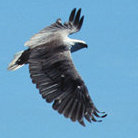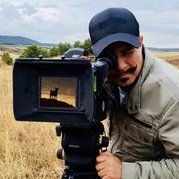-
Posts
1,106 -
Joined
-
Last visited
Profile Information
-
Occupation
Student
-
Location
Australia
Recent Profile Visitors
-
Watching a movie at the cinema can certainly be a one of a kind experience - especially when fellow audience members may do something unexpected. Sure, sometimes they can be rather annoying and may spoil the experience but there are also occasions where they can do or say something quite funny in a very memorable way. For example, in Pulp Fiction, there is that scene where John Travolta is just about to plunge a needle into Uma Thurman's chest as she's lying on the ground. I noted that in the row directly below me, there was a girl with her head turned to the side and her hand covering her face. And directly below her in the next row down was another girl doing exactly the same thing - head turned and her hand covering her face. They obviously could not handle that scene! And within the very same screening of that movie, there were two guys close to me who talked a bit now and then. For one of them, it was his first time seeing Pulp Fiction. Though his friend had seen the film before. Near the beginning when Vince and Jules were getting ready (taking their guns out of the car) the first time viewer asked if they were cops. His friend replied: "Yea." I'm not sure if many people remember Freejack - the science fiction film where Mick Jagger plays a bounty hunter. There is a scene towards the end with a fair bit of anticipation as the main character walks through an empty corridor. It's a mostly quiet scene and then a girl in the audience suddenly sneezes. Almost immediately, there is a fit of laughter in the audience. And the young girl in question makes some noises that indicate she's clearly embarrassed. And in the first Austen Powers film, Austen grabs a p***s enlarger to defeat an evil henchman. And a young female voice from the audience calls out in a very excited and urgent voice: "The p***s enlarger!" That also resulted in a lot of laughter among the audience members. Don't get me wrong - for the vast majority of the time, I don't want distractions of any kind from the audience. However, once in a while a certain individual can do something very amusing during a certain movie scene and I will remember that for many years. Anyone else have somewhat similar or different experiences at the cinema that are also amusing?
-
Thanks for the clarification. It sounds like 24fps is the default frame rate for the timeline. I did read above that a message appears if someone wants say a 30fps timeline with 30fps footage. At least it sounds like that's the case.
-
Out of curiosity, would this need to be done in other projects where you have shot the footage at 24fps and you want to export it as 24fps? Or 29.97fps footage that you want to export as 29.97fps?
-
Thank you for this important tip. Very handy to know.
-
That sounds great for projects where I want some slow motion footage. I have shot some 50fps footage in the past (specifically for slow motion.) It would be convenient to simply import it into a 24fps timeline and let the software do it's thing automatically with no discarded frames.
-
That's good to know (with regards to Resolve.) It sounds like a nice simple conversion and efficient too. I gather there's no need to slow the footage down on the timeline and deal with percentages.
-
Brian, that's what I assumed would happen if the track wasn't slowed down on the timeline but simply exported as 24ps - frames being discarded. In the case of 25fps being converted to 24fps, I guess one frame would be dropped for every second. I wonder if that would have any effect on the smoothness of the footage.
-
Jon, with Davinci Resolve, I didn't realise that there's a warning that you can't change the frame rate later. So in my scenario with the 25fps footage, do you reckon it's best to accept the default setting of 24fps for the timeline? In that case, I'm not sure if I would still need to slow it down by 4%. Or perhaps I do as I vaguely recall one Resolve tutorial video that demonstrated slowing down the footage on the timeline that was shot at a high frame rate (if I recall correctly.) If we can't change the frame rate later (as per the warning) I guess the target frame rate has to be selected at the very beginning. But that's just a wild guess as I still haven't used this software. Yea 24fps and 29.97fps seem to be the most universal frame rates so they're clearly the best choices when it comes to stock footage. It's a pity though that the stock footage industry is in a very bad way right now (especially for contributors.) The agencies are getting more and more greedy and trying to squeeze more money out of the content submitters. A lot of the commissions we get these days from sales are very pitiful. It was so much better just a few years ago. There still seems to be some people making decent money with large enough video portfolios (and of course good quality content.)
-
Edit: Maybe I should type 25fps into the project settings (after initially importing the footage) so that the NLE software recognises that it's 25fps to begin with. And then slow it down afterwards (by 4%) and type 24fps into the export settings. I do have a small number of stock footage clips that I shot in the US but it took a number of years for any of them to sell. And only one of them has sold to date. This is despite the subjects not being covered by other stock footage online. I actually wonder if the lack of sales could be due to the fact that they were shot at 25fps. I have no issues with sales of stock footage featuring Australian content shot at 25fps. Though I do have many more of those Australian clips and a greater variety of subjects too. Surprisingly, I did have a 25fps city night scene shot in Australia that was purchased by a buyer in Los Angeles. Regardless, I shoot most of my stock footage at 24fps these days.
-
Luckily, I usually mute the audio on stock footage so that should be a non issue. Gosh, a 4% difference. I didn't realise it would be that much. I may be using Davinci Resolve for this. I admit I'm a new user to Resolve (Ive never used it before.) I believe with this software, there may be some settings you input when you start a project (including frame rate.) So perhaps I could type in 24fps here (as well as at the export stage.) Oh yes a great point about US viewers likely not noticing the artifacts from converted 24fps footage. There's an interesting analogy that relates to sound rather than vision. Say someone who is not used to cicadas goes and stays in a place where there are lots of cicadas. And they ask: "What's all that noise?" And a person who grew up in cicada country would likely reply with: "What noise?"
-
I shoot a fair amount of stock footage. And when I first started out, I chose to record at the frame rate that was native to my country - Australia (25fps.) A decision I would come to regret later. When I went over to the US for a short period of time, I was still shooting at 25fps unfortunately. Yea I'm kicking myself for doing that. I found out later that there are issues with artifacts when converting 25fps to 29.97fps. As such, a number of US clients may be reluctant to purchase my 25fps. And I particularly regret shooting at 25fps when I was in the US (filming urban scenes over there.) Obviously, converting 24fps to 25fps or alternatively 24fps to 29.97fps is fine. Though how about converting 25fps to 24fps? Would there be any issues / artifacts in this scenario? I'm under the assumption that this would probably look okay (correct me if I'm wrong.) I could then use this approach and submit the clips to the stock agencies as 24fps (which is more universal than 25fps.) US clients could then convert that 24fps footage to 29.97fps with hopefully no issues. With regards to what to do within the editing software, would it just be a simple case of selecting 24fps with the export options? Or would I need to slow down the footage on the timeline by a tiny percentage? If so, what percentage would you recommend? Would it be something like 1% or perhaps 0.5 percent? Ive no idea how to do this calculation.
-
Daniel, that's a great image. Very nice capture of a time and place from long ago.
-
I wonder how many of you can remember the very first photo you took and any details about it like the subject, equipment and time period etc? For me, the first photo I took was on Kangaroo Island in South Australia in the 1980s. I was a teenager at the time. My family was at Seal Bay and in those days, it was free entry to this beach and no guided tours. My mother handed me a very simple film camera. I can't recall many details about it. It was probably some instamatic point and shoot camera. I used it to take a photo of one of the sealions on the beach. So my first photo was a wildlife image. Unfortunately, my finger intruded into the photo a little bit. I learned to avoid that mistake in future picture taking.
-

Switar non reflex lens on C mount camera
Patrick Cooper replied to Patrick Cooper's topic in Lenses & Lens Accessories
Yes true - 24fps for cinema projection and 25fps for Australia, Europe, Hong Kong and some South American countries for local TV. And 29.97fps for the US and Japan TV. The last time I had movie film transferred - super 8 - was at 24fps. This is what I prefer as apparently, it's easier to convert to 25fps or 29.97fps.





